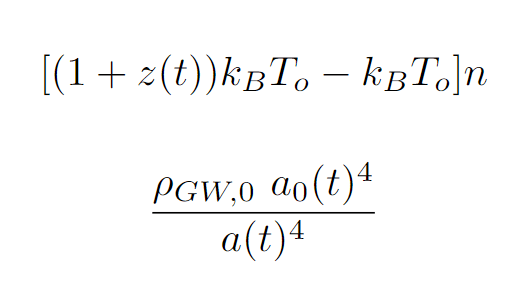The intricate relationship between metabolic rates and energy conservation is a cornerstone of ecological and physiological studies. A low metabolic rate can significantly minimize energy expenditure within an organism, thus promoting conservation and sustainability. The advantages of this metabolic efficiency extend beyond individual survival; they play a vital role in broader environmental conservation efforts. This piece aims to elucidate the reasons behind the benefits of lowered metabolic rates and how these contribute to energy conservation and the reduction of heat loss.
Metabolism encompasses all the biochemical processes that occur within living organisms, facilitating growth, reproduction, and maintenance of cellular functions. It can be broadly categorized into two components: anabolism, which builds cellular components, and catabolism, which breaks down organic matter to produce energy. Organisms exist on a spectrum of metabolic rates; some flourish with high rates, while others thrive with low metabolic activity. Understanding the mechanisms behind low metabolic rates invites contemplation not only of individual species but of entire ecosystems.
One of the principal advantages of low metabolic rates is the significant reduction in energy needs. Organisms with decreased metabolic activity require less food and fewer resources, which allows them to occupy ecological niches where resources may be scarce. This phenomenon is conspicuous in ectothermic animals, commonly known as cold-blooded animals. These organisms can regulate their body temperature not by generating heat through metabolic processes but by adjusting to environmental temperatures. Consequently, they tend to conserve energy, which is crucial when food sources are limited.
Moreover, low metabolic rates correlate with reduced thermal output. In ecological terms, heat generated through metabolic processes contributes to the energy footprint of an organism. By maintaining a lower metabolic rate, an organism minimizes its thermal emissions, thereby enhancing its capacity to retain core body temperatures. This is particularly advantageous in resource-poor environments where maintaining heat is paramount for survival. The heat generated by high metabolic rates, while essential for some species, can also lead to increased vulnerability; excessive heat loss can destabilize body functions.
The conservation of energy through low metabolic rates is also reflected in the longevity of certain species. Research shows that organisms with lower metabolic rates often exhibit extended lifespans. The inverse relationship between metabolic rate and lifespan suggests that less energy expended on metabolic processes translates into reduced cellular wear and tear. This insight hints at broader implications; species exhibiting prolonged lifespans may evolve strategies that enhance ecosystem resilience.
In addition, the principles of low metabolic rates extend beyond individual organisms to encompass community health. Ecosystems are intricately connected webs where each species plays a vital role in maintaining balance. When certain species adapt to possess lower metabolic rates, they influence the overall energy dynamics of their ecosystems. Reduced energy consumption leads to diminished resource competition among organisms, potentially resulting in greater biodiversity. Enhanced biodiversity fosters ecosystem stability, resilience against environmental changes, and improved capacity to recover from disturbances.
From a conservation perspective, understanding metabolic rates can inform habitat preservation strategies. When conservationists evaluate which species are most vulnerable and require safeguarding, metabolic rates should be a focal point. Species with inherently low metabolic rates may be more adaptable to changing climates and resource scarcity. Conservation efforts that prioritize these organisms can lead to the restoration of ecological balance in endangered habitats.
Low metabolic rates can also facilitate nutrient cycling within an ecosystem. By reducing energy input, organisms tend to utilize resources more efficiently. This efficient use can result in enhanced decomposition processes and nutrient availability in the soil, benefiting plant growth. Healthy plant communities, in turn, support diverse animal populations, establishing a positive feedback loop vital for ecological integrity.
Additionally, the lessons derived from low metabolic rates extend to agricultural practices and food production systems. Considering the pressing concerns surrounding climate change and food insecurity, integrating metabolic efficiency can lead to more sustainable practices. Crops that exhibit low metabolic rates may require fewer inputs and yield robust harvests with minimal energy expenditure. The agriculture sector can erratically benefit from these principles, fostering practices that contribute to both energy conservation and enhanced food security.
The evolution of energy conservation strategies is contingent upon shifting our perspectives on metabolic rates. By valuing organisms that excel at requiring less energy, we foster an ecological ethos that emphasizes sustainability and resilience. By acknowledging the interconnectedness of metabolism and environmental health, we cultivate a society that respects conservation practices.
In conclusion, low metabolic rates emerge not only as a biological strategy for individual organisms but as a catalyst for broader environmental changes. Reduced energy consumption and diminished heat loss elucidate the intricate balance within ecosystems. As we explore this paradigm, we recognize the fundamental interdependencies amongst species and their habitats. Those interested in ecology and conservation must remain receptive to the intricacies of metabolic rates, understanding their implications for sustainability in an increasingly resource-stressed world. The promises of lower metabolic rates extend far beyond the individual; they offer a compelling invitation to rethink our relationship with energy and the environment.






